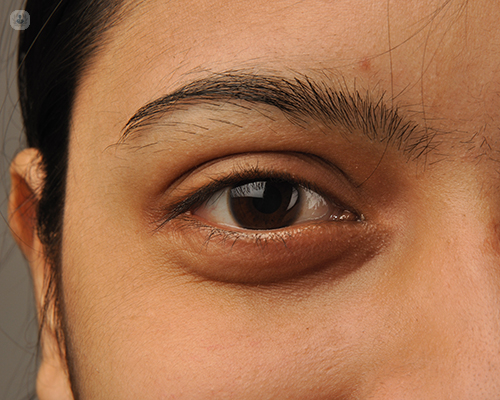Can the eyes show signs of diabetes?
Autore:We may not have ever really given it second thought, but did you know that our eyes can actually display signs of diabetes? On hand here to provide us with more information regarding how exactly the eyes can show signs of diabetes, and what can occur over time if left untreated, is revered consultant optometrist, Mr Robert Longhurst.
Can the eyes show signs of diabetes?
Yes, indeed they can. Diabetes can affect the blood vessels at the back of the eye, which an optometrist or ophthalmologist can see when they look at the retina (the light-sensitive layer). It is important to realise that by the time we can see these diabetic-related changes in the blood vessels, it is likely someone has been diabetic for some time. An eye examination, therefore, is not a substitution for a blood test if you think you might be diabetic.
Which eye disease is diabetes in the eyes related to?
These changes in the blood vessels are a part of an eye disease called diabetic retinopathy, which, if left untreated, causes progressive damage to the retina, and is potentially blinding. In the early stages of the disease, small outpouchings called microaneurysms are seen and these rupture to form small haemorrhages called dot and blot haemorrhages.
As more and more blood vessels are affected, there are more and more haemorrhages. These haemorrhages can cause the central part of the retina, which is called the macula, to swell. Macular swelling (or to give its proper name, macula oedema) can adversely affect your vision. Exudates can also form. These are residues from blood vessels leaking fluid.
What exactly happens over time if this is left untreated?
Over time, blood flow becomes restricted, and as a result, parts of the retina are deprived of oxygen. This causes cotton wool spots, which are fluffy white patches on the retina that indicate nerve damage. The blood vessels themselves can also begin to abruptly meander, which we call venous loops. Vessels can also start to resemble a string of sausages, which we call venous beading.
With the retina being increasingly deprived of oxygen, the body makes abnormal new blood vessels. This is called neovascularisation and is an advanced stage of diabetic retinopathy. These new blood vessels are fragile and can bleed. They can bleed into the cavity behind the lens inside the eye, which can cause shadows in your vision. Scarring can also occur, which can cause the retina to detach.
New blood vessels sometimes grow in the iris, the coloured part of the eye that surrounds the pupil. This is called rubeosis iridis and these new blood vessels can block part of one of your eyes drainage systems (the trabecular meshwork). This can cause the pressure in your eye to increase and lead to glaucoma. Glaucoma itself is a leading cause of irreversible blindness today.
What other eye-related conditions can diabetes in the eyes cause?
Additionally, diabetes can cause cataracts. This is usually caused from there being too much sugar in one of the fluids inside the eye, which is referred to as the aqueous humour. The body converts this sugar to a sugar alcohol called sorbitol, which then finds its way into the lens.
The lens in the eye is normally clear like glass, but the sorbitol causes the lens to take in water, which causes it to swell and to form a cataract (a clouding in the eye). Having a cloudy lens causes the vision to become blurry or misty.
These changes in the lenses also cause your glasses prescription to change. Someone with unstable blood sugar, therefore, will also have an unstable prescription and find they are needing to change their glasses more often. Sometimes, a frequent change in someone's glasses prescription is the first sign they have diabetes.
Why is it so important for patients to have regular and thorough eye examinations?
So, although you can have diabetes with the eyes showing no signs of it, regular eye examinations are important, as sometimes there are quite a lot of signs. As well as a whole host of ocular diseases, a thorough eye examination can also uncover high blood pressure, high cholesterol, and even certain types of colon cancer. This is why you should be seen by an optometrist at least once every two years or as often as your eye specialist recommends.
Mr Robert Longhurst is a highly regarded and experienced London-based consultant optometrist who specialises in a host of eye-related conditions. Visit his Top Doctors profile today and book an appointment with him.



